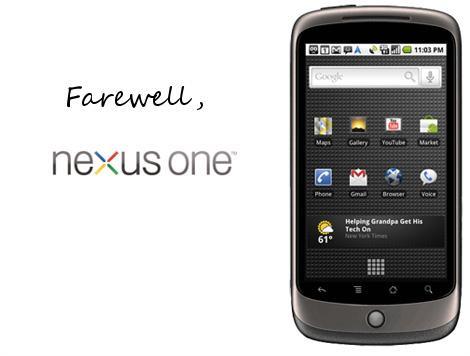
It's not true that for each Android handset that gets released, the specs get better. A lot of manufacturers use older versions of the mobile OS because from the time the phone is being developed until it is being released, it's too hard to keep up with the fast-paced development of Android. Most of these manufacturers eventually catch up, but sometimes they just stop supporting that particular handset in favor of a newer one. This is where the Nexus One had the upper hand.
Since the Nexus One was sold directly through Google, it had the advantage of being their baby. All new features arrived for the Nexus One before moving to other devices. For instance, wireless tethering and trackball notifications (despite being available through custom ROMs) first officially appeared in Android 2.2. Now we could spend all day listing off the features that make the Nexus One different from other phones, but I just want to say a few words about its departure from the Google online store.
Selling this phone solely through the website was a bold move. It was definitely no match for the $100-million Verizon dropped into their DROID campaign (though it was successful). I wish that Google had made this handset more available for the public to experience. With no way to try before buying, it was a tough sell for some people. That coupled with the force-changing of cellular plans or paying for the device unsubsidized made it even tougher. However, the fact that Google finally made a phone they could really call their own was a nice move. "What phone is that?" someone would ask me. "The Nexus One, you know, the one on the Google site," I'd respond. "Oh, the Google Phone!" I was never too keen on labeling it this way, but it definitely helped relate Android and Google for those who aren't hardcore into following cellphones (like all the awesome people that are reading this... yes, you!).
Live wallpapers, trackball notifications, wireless tether, a smarter gallery app, automatic updating of apps from the market, all of these things helped keep the Nexus One as a solid competitor as new devices with the same processing speed emerged. Additionally, the Nexus One's ability to easily load custom ROMs made it a geekworld favorite, even though it voided the phone's warranty to load something else on it. In my eyes, the ability to continue being one of the leading smartphones in terms of hardware and features after being launched over 6 months ago, makes the Nexus One a truly amazing device. Perhaps some other companies will take note of the many smartphone users who favor "vanilla" Android and start producing some devices with at least the option to disable custom UIs and other clutter.
Nexus Ones can still be purchased throughout many countries in Europe via Vodafone, as seen on the Google page here. However, it's run in the U.S. seems to be over, at least for now. Perhaps this is the sign of something new to come? Here's to hoping, but in the meantime, long live the Nexus One!